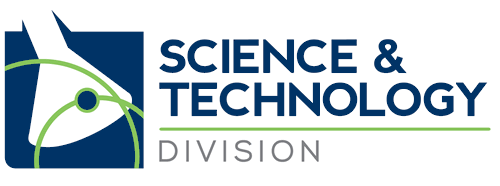1K
Review of Basic Concepts of Pharmacology in Drug Development – S&TD conference session 2012 by R. A. (Bob) Lyon, Section Head R&D Proctor and Gamble – reviewed by Brian Howells
bhsci@uol.com.br
The objective of the talk was to outline the process of drug development, the principles underlying this process and some of the associated terminology and techniques.
Drugs are exogenous substances that bring about a change in biological function through a chemical interaction with the endogenous mechanisms within the body.
The overall flow of drug development is as follows
Identification of a target mechanism in the body which brings about a desired alteration in biological function (e.g. 5HT1A (serotonin) receptor activation, alleviating anxiety)
↓
Screening of numerous compounds in vitro to try to identify compounds having the desired effect and narrow down to a single “lead compound” which has the best and “cleanest” effect (low toxicity and fewest other, possibly undesirable, effects)
↓
Various animal studies, examining the specific and general pharmacology of the lead substance, and its safety (toxicity, mutagenicity, effect on reproduction, etc.)
↓
Phase I (preclinical) studies on humans, typically healthy, investigating safety (adverse effects), tolerance (dosage) and pharmacokinetics (absorption, distribution, metabolism, excretion)
↓
Phase II clinical studies on small numbers of target subjects to investigate efficacy (proof of concept – effect on target, e.g. anti-anxiety) safety, and dose-effect relationships in this population
↓
Phase III large-scale clinical studies on the target population
↓
Submission to the regulatory authorities
After approval (possibly with contingencies)
↓
Phase IV
This process typically takes of the order of 10 years, and costs of the order of $500 million.
Principles of drug action
Drugs largely work by interacting with signalling between cells. In the talk, this was illustrated by signalling at the synapse between neurons.
There are various possible targets for this interaction, which include:
· a direct effect at the cell level to stimulate or block the release of a chemical substance such as a hormone, neurotransmitter or enzyme (e.g. releasing agents);
· activation or blocking of the receptors for such chemical substances, provoking the receptor to produce a response by mimicking the natural substance (agonist); or blocking or altering the receptor so that the natural substance cannot produce a response (antagonist)
· activation or blocking of a transporter substance, to enable a substance, or nerve impulse, etc., to reach its target, or stop it from so doing.
· activation or inhibition of an enzyme, by altering the molecule to make it more or less active, or by mimicking a natural substrate and blocking active sites
· stimulation or repression at gene level, to activate or inhibit expression of an enzyme
There are numerous possibilities, and the molecular mechanisms are exceedingly complex.
Expressing drug dose/response (in vitro)
Agonists can be full agonists, giving a 100% response, or partial agonists, giving less than a 100% response. The effect of an agonist is typically expressed as ED50 or EC50– the dose or concentration giving a 50% effect. The maximum effect is Emax. For measuring dose [D] vs. effect, log[D] vs. (E/Emax) is generally used, which gives a sigmoidal curve.
The dose-response is an expression of the affinity of the agonist for the receptor or receptor occupancy.
Potency expresses dose/effect – i.e. is related to EC50; in general, high potency is preferred since a lower dose is likely to generate fewer side effects.
Antagonists do not have intrinsic activity but shift the effect of an agonist. Antagonism can be competitive, when binding to a receptor is reversible and the antagonist competes with the agonist, or non-competitive, when the antagonist binds irreversibly or alters the receptor. Competitive antagonism increases EC50, and it may be possible to achieve a maximal effect with more agonist. Non-competitive antagonism on the other hand lowers Emax, because fewer receptors are available.
The remarks on competitive and non-competitive antagonism also broadly apply to competitive and non-competitive inhibition of enzymes, except that in this case competition is between an inhibitor which can reversibly bind to an active site on the enzyme, and a natural substrate.
Effectiveness of course needs to be weighed against safety. One index of this is the therapeutic index, which is
ED50 for a therapeutic effect/ED50 for a lethal effect
Measuring drug-receptor interaction
Radioligand binding was introduced as a method for studying receptor interactions, by radiolabelling drugs (ligands) to study affinity for receptors by comparison with the same or different unlabelled ligands.
Reviewed by Brian Howells bhsci@uol.com.br
Reviewed by Brian Howells bhsci@uol.com.br
Brian Howells has a bachelor’s degree in agricultural science and has been a freelance translator from Japanese to English for around 25 years specializing in technical (principally chemical) and patent-related translation. For the last 20 years he has been living on the beach in São Paulo state, Brazil.

